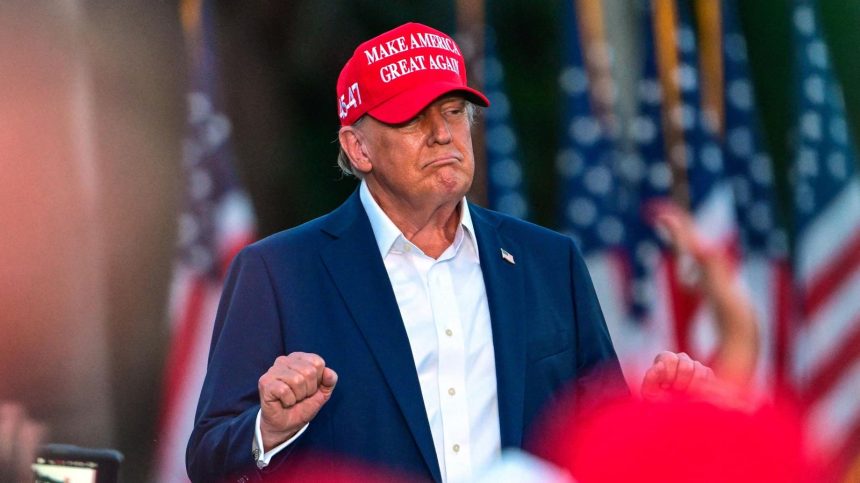With questions swirling about the future of President Joe Biden’s candidacy for reelection, there is an increasing possibility that Donald Trump could return to the White House. While the Biden administration has enacted upwards of $167 billion in student loan forgiveness during the last four years, millions of borrowers remain on the hook about their student debt. And the future of student loan forgiveness and favorable repayment programs is uncertain.
During Trump’s presidency, no major student loan forgiveness plans were repealed. This includes Public Service Loan Forgiveness — a popular debt relief program that can eliminate a borrower’s federal student loans after 10 years of nonprofit or government employment. Advocacy groups argued that the Trump administration slow-walked relief for millions of borrowers, severely curtailing the effectiveness of existing loan forgiveness programs. And Trump’s Education Department took concrete steps to narrow relief, such as by rewriting regulations governing Borrower Defense to Repayment. But by and large, the federal student loan system — including PSLF and most other major loan forgiveness programs, as well as income-driven repayment programs — remained technically intact.
That may not be true during a second Trump administration, however. Project 2025 — a sweeping conservative policy proposal — calls for modifying, rescinding, or repealing federal student loan forgiveness plans, including PSLF and debt relief through IDR programs. The Trump campaign has distanced itself from Project 2025, but Trump himself has spoken out against Biden’s student loan forgiveness initiates on the campaign trail.
If re-elected, could Trump repeal PSLF and other student loan forgiveness plans? Here’s a breakdown of what could happen.
Administrative Changes Could Interfere With Student Loan Forgiveness Plans
Without directly changing any rules or statutes governing federal student loan forgiveness and repayment programs, a future Trump administration could still make it harder for borrowers to receive debt relief.
Project 2025 calls for a significant restructuring of the federal government, including abolishing the Education Department. “Federal education policy should be limited and, ultimately, the federal Department of Education should be eliminated,” reads the proposal. Trump himself has spoken out in favor of taking action to significantly reduce the federal government workforce. Such changes could have direct impacts on federal student loan programs.
Even now, the Education Department and its contracted loan servicers have struggled to implement various student loan forgiveness and repayment plan initiatives. This has led to processing backlogs, billing mistakes, and delayed relief. Eliminating the department, wiping out staff and their associated institutional expertise, and drastically cutting funding could make it even harder for borrowers to apply and receive approval for various student loan programs, including PSLF and IDR — even if those programs technically remain available.
Steps To Modify Or Rescind Student Loan Forgiveness And Repayment Plan Rules, Including For PSLF
At a minimum, a future Trump administration would at least try to tackle the low-hanging fruit of the student loan system: programs enacted primarily through Education Department regulations.
Historically, Congress has passed statutes establishing certain student loan programs, but left if up to the Education Department to draft regulations implementing those programs. The statutes basically provide broad parameters within which the department can operate, and then the regulations go into far more detail about how the programs ultimately work.
Trump as president probably couldn’t just do away with formal student loan forgiveness or repayment programs with the flick of a pen. But he could direct the Education Department to draft new regulations that change or diminish how the plans operate, or repeal them entirely. Drafting and implementing new regulations takes time — typically a year or two. But that’s easily possible during a four-year presidential administration.
The programs most at risk could be the Saving on a Valuable Education, or SAVE, plan, as well as Pay As You Earn (or PAYE for short). SAVE and PAYE are two IDR plans, established largely through the regulatory process, that base a borrower’s monthly payments on their income. Separately, SAVE is already facing two serious legal challenges that threaten its future.
The Trump administration would probably not be able to completely eliminate other programs, such as PSLF, through the regulatory process, since PSLF is authorized by statute previously passed by Congress. Similarly, Income-Based Repayment, or IBR, is a separate IDR program (different from SAVE and PAYE) that was established by Congress through statute. But he could order the Education Department to rescind new PSLF regulations established during the Biden administration that relax prior restrictions and make it easier for borrower’s to qualify for loan forgiveness.
Congress Could Repeal PSLF And Other Student Loan Forgiveness Programs
If Republicans obtain unified control of the House, Senate, and the White House, student loan forgiveness and repayment programs could be at greater risk. That’s because Congress would be able to pass legislation that goes much further than regulatory changes.
During the first two years of the Trump administration, Republicans controlled both the House and the Senate. During that time, no legislation was passed to repeal major student loan forgiveness or repayment plans, including PSLF. So, unified control of Washington does not come with any guarantees of major legislative changes. But, since then, student loan forgiveness has become a much more polarized and partisan issue.
A Republican-led Congress could potentially repeal popular student loan forgiveness programs, including PSLF and IDR plans, by passing new legislation. Even this year — when Republicans only control the House of Representatives — congressional GOP leadership released proposed legislation that would eliminate student loan forgiveness associated with IDR plans and repeal borrower-friendly debt relief regulations enacted during the Biden administration (although it would appear to leave PSLF intact).
A major question for current borrowers is whether they would be “grandfathered in” to existing programs if they were repealed — meaning that any changes would only apply to new or future borrowers going forward. If borrowers are not grandfathered in, some advocates argue that there could be a basis for legal challenges, since these borrowers would have made decisions in reliance on the continued existence of these programs, many of which were contractually built into federal student loan promissory notes.
But whether or not to grandfather people in would ultimately be up to Congress. And if there are subsequent legal challenges brought by borrowers, the outcome of those challenges would ultimately be up to the courts.
Bottom Line For Student Loan Borrowers
Student loan borrowers are already dealing with unprecedented uncertainty. The upcoming presidential election injects even more unpredictability. Even if President Biden wins reelection, certain student loan forgiveness and repayment initiatives — such as the SAVE plan — remain at risk due to court challenges.
If Trump returns to office, more student loan programs could be in danger. But the scope of that danger may depend, at least in part, on who controls Congress, and how far the White House and Republican leaders are willing to go in curtailing student debt relief plans.
Read the full article here
















